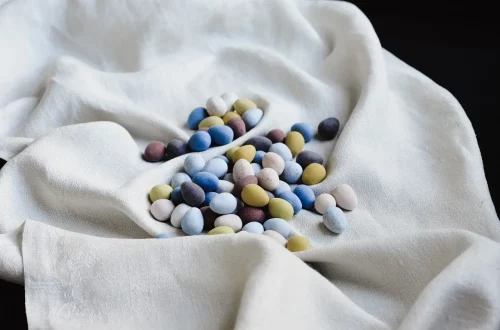
Effective Tips on How to Regrow Edges for Healthier Hair
Healthy hair is often a reflection of overall wellness, and for many, achieving luscious locks is a journey that involves more than just the right shampoo or conditioner. One of the most common concerns among hair enthusiasts, particularly those with textured or curly hair, is the challenge of maintaining and regrowing the edges. The edges, or the hairline, can become fragile due to various factors, including heat styling, chemical treatments, and even tight hairstyles. These elements can lead to thinning hair, breakage, or even bald patches, which can be distressing for anyone who values their hair’s appearance.
Understanding the importance of edge care is crucial. Healthy edges contribute to a polished look and can significantly enhance overall hair volume and thickness. Moreover, the edges are particularly susceptible to damage due to their delicate nature. Thus, addressing this issue requires a combination of patience, care, and effective strategies tailored to promote hair regrowth. By focusing on nurturing the edges, individuals can not only restore their hairline but also foster healthier hair growth throughout.
In this article, we will explore effective tips and methods for regrowing edges, ensuring that your hair not only looks good but feels strong and vibrant.
Understanding the Causes of Edge Damage
Before embarking on a journey to regrow your edges, it’s essential to understand the underlying causes of edge damage. Various factors can contribute to thinning hairlines, and identifying these causes is the first step toward effective treatment.
One of the most common culprits is improper hairstyling techniques. Hairstyles that pull tightly on the roots, such as braids, ponytails, or weaves, can lead to traction alopecia. This condition occurs when hair follicles are subjected to excessive tension, resulting in hair loss over time. It’s important to recognize that while these styles can be fashionable, they can also cause significant harm if worn too frequently or too tightly.
Another factor that plays a significant role in edge damage is the use of harsh chemicals. Chemical treatments, such as relaxers or dyes, can weaken hair strands and lead to breakage. Over time, this damage can extend to the edges, making them more susceptible to thinning. Additionally, heat styling tools, like flat irons or curling wands, can exacerbate the problem by drying out the hair and causing structural damage.
Environmental factors also contribute to edge health. Exposure to harsh weather conditions, such as extreme heat or cold, can lead to dryness and brittleness. Pollution can also impact hair health, as it can accumulate on the scalp and hair, leading to irritation and damage.
Lastly, nutritional deficiencies can affect hair growth and health. A diet lacking in essential vitamins and minerals can hinder the body’s ability to produce strong, healthy hair. Nutrients such as biotin, vitamin E, and omega-3 fatty acids are crucial for maintaining hair health and promoting growth.
Recognizing these causes is vital for developing an effective strategy to regrow your edges. Once you understand what might be contributing to your hairline issues, you can take targeted action to address them and promote healthier hair growth.
Implementing a Nourishing Hair Care Routine
A nourishing hair care routine is paramount when it comes to regrowing edges and maintaining overall hair health. Incorporating gentle products and techniques can significantly impact the strength and vitality of your hair.
First and foremost, choose sulfate-free shampoos that are gentle on the scalp. Sulfates can strip natural oils, leading to dryness and damage. Opt for a moisturizing shampoo that provides hydration without weighing down the hair. Additionally, consider co-washing, or using conditioner to cleanse your hair. This method helps maintain moisture levels and is less harsh on the edges.
Conditioning is another crucial step in your hair care regimen. Focus on deep conditioning treatments that penetrate the hair shaft and provide essential moisture. Look for products containing ingredients like shea butter, argan oil, and coconut oil, which are known for their hydrating properties. Aim to deep condition your hair at least once a week to restore moisture and elasticity.
Incorporating a lightweight leave-in conditioner can also benefit your edges. This product helps to lock in moisture throughout the day and provides added protection against environmental damage. When applying any product, be gentle, especially around the edges. Use your fingertips to massage the product into the scalp and hair without pulling or tugging.
Additionally, consider incorporating natural oils into your routine. Oils such as castor oil, jojoba oil, and rosemary oil are known for their ability to promote hair growth and nourish the scalp. Massage these oils into your edges two to three times a week to stimulate blood circulation and provide essential nutrients to the hair follicles.
Lastly, be mindful of your styling techniques. Avoid styles that place tension on the edges and opt for looser hairstyles. When using heat, always apply a heat protectant and limit the frequency of heat styling to minimize damage.
A consistent and nurturing hair care routine will not only improve the health of your edges but also contribute to the overall vitality of your hair.
Nutrition and Supplements for Healthy Hair Growth
Nutrition plays a pivotal role in hair health, and ensuring you get the right nutrients can significantly impact your edge regrowth journey. A balanced diet rich in vitamins and minerals is essential for promoting strong, healthy hair.
Start by incorporating protein-rich foods into your meals. Hair is primarily made of a protein called keratin, so consuming adequate protein is crucial for hair growth. Include sources such as lean meats, fish, eggs, legumes, and nuts in your diet. These foods provide the building blocks needed for hair strength and elasticity.
Vitamins and minerals are equally important. Biotin, also known as vitamin H, is particularly known for its role in promoting hair growth. Foods rich in biotin include eggs, almonds, and sweet potatoes. Additionally, vitamin E is a powerful antioxidant that helps improve scalp circulation and promotes hair growth. Incorporate foods like spinach, avocados, and sunflower seeds to ensure adequate vitamin E intake.
Omega-3 fatty acids are another vital component for healthy hair. These healthy fats help nourish the scalp and promote shiny, hydrated hair. Fatty fish like salmon, walnuts, and flaxseeds are excellent sources of omega-3s.
If you find it challenging to meet your nutritional needs through diet alone, consider taking supplements specifically designed for hair health. Look for products that contain biotin, vitamin E, and other hair-friendly nutrients. However, it’s essential to consult with a healthcare provider before starting any new supplements to ensure they’re appropriate for your individual health needs.
A well-rounded diet that prioritizes hair-healthy nutrients will support not only edge regrowth but also enhance the overall quality of your hair.
Gentle Styling Techniques to Protect Your Edges
Protecting your edges during styling is crucial for promoting regrowth and overall hair health. Adopting gentle styling techniques can help minimize breakage and tension, allowing your edges to flourish.
One of the first steps is to avoid tight hairstyles that place stress on the hairline. While styles like braids and ponytails can be fashionable, they can also lead to traction alopecia if worn too frequently or too tightly. Opt for looser hairstyles that don’t put undue tension on the edges. If you enjoy wearing braids, consider using larger sections of hair to reduce the strain on your hairline.
When using hair accessories, choose options that are gentle on the hair. Avoid rubber bands, as they can cause breakage. Instead, opt for fabric-covered hair ties or scrunchies that won’t snag or pull on the hair. Additionally, avoid using metal clips or barrettes that can cause damage, and choose softer options that won’t tug on the edges.
If you frequently use heat styling tools, it’s crucial to use them sparingly and always apply a heat protectant beforehand. Heat can weaken hair strands and lead to breakage, so limit the use of flat irons and curling wands. When styling, use the lowest heat setting necessary and avoid direct contact with the edges.
Incorporating protective styles is another excellent way to safeguard your edges. Styles such as wigs, scarves, or caps can provide a barrier against environmental damage while allowing your natural hair to rest. Be sure to give your hair breaks between styles to prevent overuse and allow your edges to recover.
Lastly, consider regular scalp massages as part of your styling routine. Massaging the scalp can help improve blood circulation, promoting hair growth and strengthening the hair follicles. Use your fingertips to gently massage the scalp, focusing on the edges without causing any pulling or stress.
By adopting gentle styling techniques and prioritizing protection, you can create an environment that promotes healthy edge regrowth while minimizing the risk of damage.
In summary, achieving healthier edges requires a multifaceted approach that includes understanding the causes of damage, implementing a nourishing hair care routine, focusing on nutrition, and adopting gentle styling practices. Your hair’s health is a reflection of your overall well-being, and with patience and care, you can achieve the lush, vibrant hair you desire.
*Disclaimer: This article is for informational purposes only and does not constitute medical advice. For any health concerns, please consult a qualified healthcare professional.*




